IPE (European I Beams) and IPN (European Standard Beams) are two prominent types of steel beam sections used in construction and structural engineering across Europe and globally. They belong to the category of “I” or “H” sections due to their shape, which resembles the letter “I” when viewed in cross-section. These beams are designed to offer efficient structural support with various applications in building frameworks, bridges, and other structural projects.
IPE & IPN STEEL BEAMS
WHAT IS AN “IPE” STEEL BEAM
IPE steel beams are a type of structural steel beam used widely in the construction and engineering industries. “IPE” stands for “European I Beam” with a parallel flange surface. Part of the larger family of I-beams, they are known for their distinctive I-shaped cross-section, which includes parallel flanges and a linear web connecting them. This design grants the beam a high load-bearing capacity relative to its weight, making it an efficient choice for a broad range of structural applications.
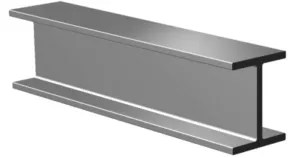
Characteristics of IPE Steel Beams:
- Profile: IPE beams have a slim profile with relatively small flanges compared to their height, contributing to their high strength-to-weight ratio.
- Material Efficiency: The parallel flange surfaces and uniform thickness across the section enhance the beam’s structural efficiency, enabling it to carry significant loads without excessive material use.
- Versatility: Thanks to their structural properties, IPE beams are versatile in application and suitable for use in frames, supports, and as load-bearing elements in both commercial and residential construction projects.
- Design Compatibility: The shape and dimensions of IPE beams make them suitable for joining and fabrication, facilitating their integration into complex structures.
Applications of IPE Steel Beams:
IPE beams are commonly utilized in building frameworks, bridge supports for roofs and floors, and other architectural and engineering structures where strength, flexibility, and efficiency are key considerations. Their design is particularly advantageous in projects where both the aesthetic appeal and functional performance of the structural elements are important.
Standardization:
The dimensions and mechanical properties of IPE beams are standardized according to European standards, ensuring consistency and reliability in their performance across various applications. This standardization supports engineers and architects in designing structures that meet specific safety and durability requirements while optimizing material use.
In summary, IPE steel beams are a fundamental component in modern construction, offering a balance of strength, efficiency, and versatility that makes them suitable for a wide array of structural applications.
WHAT IS AN “IPN” STEEL BEAM
An IPN steel beam is a type of structural steel element commonly used in construction and engineering projects across Europe and globally. “IPN” stands for “I-Profil Normal” in French, which translates to “Standard I Profile” in English.
It is also known as a European Standard Beam. The IPN beam is characterized by its tapered flanges and a relatively narrow depth compared to other I-beam profiles like IPE (European I Beams) or H-beams.
Some literature, or manufacturers, denominates IPN steel beams as “INP” beams: these terms are actually synonyms and refer to the same product.
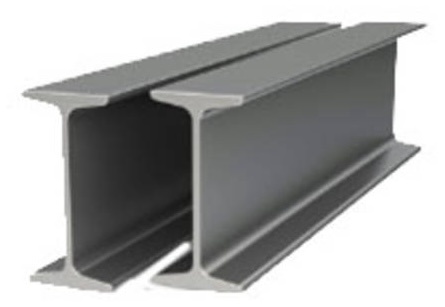
Characteristics of IPN Steel Beams:
- Tapered Flanges: Unlike the parallel flanges of IPE beams, IPN beams have inwardly tapered flanges, which contribute to a significant reduction in weight while maintaining good structural strength.
- Narrow Profile: The overall width and depth of IPN beams are generally smaller than those of IPE beams, making them suitable for applications where space is limited or where a lighter structural element is required.
- Versatility and Efficiency: IPN beams offer a good balance of strength and flexibility, making them versatile for use in various structural applications. Their design is efficient for bearing loads and resisting bending moments.
- Economic Choice: Due to their shape and reduced material usage, IPN beams can be a cost-effective choice for certain structural requirements.
Applications of IPN Steel Beams:
IPN beams are widely used in the construction industry for a range of applications, including:
- Building Frameworks: They serve as supporting structures for floors, roofs, and walls in residential and commercial buildings.
- Bridges and Infrastructure: IPN beams are utilized in the construction of bridges and other infrastructure projects where strength and durability are paramount.
- Industrial Constructions: They are used in industrial settings for frames, supports, and other structural elements where efficient load-bearing capacity is needed.
Standardization:
The dimensions, mechanical properties, and manufacturing standards of IPN beams are regulated by European standards, ensuring consistency in quality and performance. This standardization facilitates the design and construction of safe, reliable structures.
Steel beams IPE/INP are a very commonly used type of steel profile. Beams, otherwise called “I” sections, continental beams, or IPE/IPN, are available in multiple material grades, the most common are EN 10025 S275, and S355.
DIFFERENCE BETWEEN IPE VS. IPN BEAMS
IPE (European I Beams) and IPN (European Standard Beams) are both popular types of steel beams used in construction and engineering for their structural support capabilities. Despite their similarities, they have distinct profiles and characteristics that make them suitable for different applications.
IPE Beams (European I Beams)
- Profile: IPE beams have a characteristic I-shaped cross-section with parallel flange surfaces and a relatively uniform thickness across the web and flanges. The flanges are wider than those of IPN beams, providing a higher surface area.
- Design Focus: The design of IPE beams focuses on optimizing the strength-to-weight ratio, making them lighter than IPN beams of similar strength. This is achieved through the strategic distribution of material in the cross-sectional area.
- Applications: Due to their efficient design and strength, IPE beams are commonly used in a wide range of structural applications, including building frameworks, bridges, and support structures where weight saving is beneficial without compromising structural integrity.
IPN Beams (European Standard Beams)
- Profile: IPN beams also have an I-shaped cross-section, but with tapered flanges that are not parallel like those of IPE beams. The interior surface of the flanges slopes towards the web, creating a narrower profile.
- Design Focus: The design of IPN beams prioritizes depth over width, offering good resistance to bending and torsional stresses. The tapered flanges contribute to a lower moment of inertia compared to IPE beams, making them less suitable for applications requiring minimal deflection under load.
- Applications: IPN beams are often used in construction projects where the beam’s depth is more critical than its flange width, such as in floor joists and smaller load-bearing structures. Their tapered flanges make them a good choice for projects where beam-to-beam connections are prevalent.
Key Differences IPE vs. IPN
- Flange Geometry: The most notable difference lies in the flange design—IPE beams have parallel flanges, while IPN beams have tapered flanges.
- Strength-to-Weight Ratio: IPE beams generally offer a better strength-to-weight ratio due to their wider flanges and uniform thickness, making them suitable for projects requiring efficient material use.
- Moment of Inertia: IPE beams typically have a higher moment of inertia, making them more resistant to bending and deflection compared to IPN beams with a similar weight.
EN SPECIFICATIONS FOR IPE/IPN BEAMS
For IPE (European I Beams) and IPN (European Standard Beams), key EN (European Norm) specifications define their dimensions, tolerances, mechanical properties, and steel grades. These specifications ensure the beams are suitable for various structural applications across construction and engineering sectors. Here are the critical EN specifications for both IPE and IPN steel beams:
Common EN Specifications for IPE and IPN Beams
EN 10025
- Title: “Hot rolled products of structural steels”
- Scope: This multi-part standard specifies requirements for the chemical composition and mechanical properties of hot-rolled structural steel, including the steel grades used in IPE and IPN beams. It covers grades such as S235, S275, and S355, which denote the steel’s yield strength and are crucial for determining the beam’s suitability for specific structural applications. The standard is particularly relevant for specifying the material quality and properties.
EN 10365
- Title: “Hot rolled steel channels, I and H sections – Dimensions and masses”
- Scope: Although primarily known for channels and H sections, EN 10365 also includes dimensional and mass specifications relevant to IPE and IPN sections. It details the size ranges, profile dimensions (including height, width, and flange thickness), and weight per unit length, ensuring uniformity and consistency in beam production.
Specifics for IPE Beams
- Profile Dimensions: IPE beams are characterized by their parallel flange surfaces and relatively narrow flanges compared to their height. The EN standards provide specific dimensions, promoting standardization in design and application.
- Applications: IPE beams are widely used in construction for their efficient load-bearing capacity and aesthetic appearance in visible structures.
Specifics for IPN Beams
- Profile Dimensions: IPN beams, often recognized for their tapered flanges, offer a different profile from IPE beams. The EN standards outline their unique dimensions, which are suitable for various structural needs where depth and strength are required without the need for wide flanges.
- Applications: IPN beams find application in load-bearing structures where the aesthetic concern is secondary to structural integrity and compactness.
Key Considerations
- Selection Based on Structural Needs: The choice between IPE and IPN beams depends on specific project requirements, including load conditions, aesthetic considerations, and construction techniques.
- Compatibility with European Standards: Adhering to EN specifications ensures that the beams meet the necessary safety, reliability, and performance criteria for use in European and global markets.
- Material Grade Selection: The steel grade (as specified in EN 10025) affects the beam’s strength, ductility, and welding properties, influencing its application in different environmental conditions and load-bearing requirements.
MATERIAL GRADES FOR IPE/IPN BEAMS
For IPE (European I Beams) and IPN (European Standard Beams), the material grades are crucial for determining their strength, ductility, and suitability for various construction and engineering applications. These beams are commonly manufactured from structural steel grades outlined in the EN 10025 standard, which specifies the technical delivery conditions for hot-rolled structural steel products. Here are the common material grades used for IPE and IPN beams:
EN 10025 S235
- Grade Specification: EN 10025 S235JR
- Characteristics: S235 is a basic structural steel grade with good weldability and excellent formability, making it suitable for general structural applications. It offers a minimum yield strength of 235 MPa.
EN 10025 S275
- Grade Specification: EN 10025 S275JR
- Characteristics: This grade provides a higher strength level than S235, with a minimum yield strength of 275 MPa. S275 steel is also easily weldable and has good formability, suited for a wide range of structural purposes where higher strength is needed.
EN 10025 S355
- Grade Specification: EN 10025 S355JR
- Characteristics: S355 is a high-strength, low-alloy steel grade that offers greater strength and is widely used in critical load-bearing structures. It has a minimum yield strength of 355 MPa and features excellent impact resistance, making it ideal for construction in harsh environments.
Materials Selection Considerations
- Load Requirements: The choice of material grade is often dictated by the load requirements of the project. Higher-grade steels like S355 are selected for structures that require high strength and durability.
- Weldability and Formability: While all these grades are weldable, the specific welding and forming techniques may vary depending on the grade. Higher grades may require pre-heating or specific welding materials.
- Environmental Conditions: Grades with enhanced toughness, like S355, are preferable in environments subject to low temperatures or where there are high demands on structural integrity.
- Cost Efficiency: Higher-strength steels, while offering better performance, can also lead to higher costs. It’s crucial to balance the material grade choice with budgetary constraints and structural necessities.
DIMENSIONS & WEIGHTS OF IPE/IPN STEEL BEAMS
IPE Beams Sizes, and Mechanical Properties
| IPE Size (mm) | Weight (kg/m) | Sectional Area (cm2) | Inertial Moment | Resistance Modules | Inertial Radius | |||||||
| h | b | a | e | r | Jx (cm4) | Jy (cm4) | Wx (cm3) | Wy (cm3) | ix (cm) | iy (cm) | ||
| IPE 80 | 46 | 3,8 | 5,2 | 5 | 6,0 | 7,64 | 80,14 | 8,49 | 20,03 | 3,69 | 3,24 | 1,05 |
| IPE 100 | 55 | 4,1 | 5,7 | 7 | 8,1 | 10,32 | 171,0 | 15,92 | 34,20 | 5,79 | 4,07 | 1,24 |
| IPE 120 | 64 | 4,4 | 6,3 | 7 | 10,4 | 13,21 | 317,8 | 27,67 | 52,96 | 8,65 | 4,90 | 1,45 |
| IPE 140 | 73 | 4.7 | 6,9 | 7 | 12,9 | 16,43 | 541,2 | 44,92 | 77,32 | 12,31 | 5,74 | 1,65 |
| IPE 160 | 82 | 5,0 | 7,4 | 9 | 15,8 | 20,09 | 869,3 | 68,31 | 108,7 | 16,66 | 6,58 | 1,84 |
| IPE 180 | 91 | 5,3 | 8,0 | 9 | 18,8 | 23,95 | 1.317 | 100,9 | 146,3 | 22,16 | 7,42 | 2,05 |
| IPE 200 | 100 | 5,6 | 8,5 | 12 | 22,4 | 28,48 | 1.943 | 142,4 | 194,3 | 28,47 | 8,26 | 2,24 |
| IPE 220 | 110 | 5,9 | 9,2 | 12 | 26,2 | 33,37 | 2.772 | 204,9 | 252,0 | 37,25 | 9,11 | 2,48 |
| IPE 240 | 120 | 6,2 | 9,8 | 15 | 30,7 | 39,12 | 3.892 | 283,6 | 324,3 | 47,27 | 9,97 | 2,69 |
| IPE 270 | 135 | 6,6 | 10,2 | 15 | 36,1 | 45,95 | 5.79 | 419,9 | 428,9 | 62,20 | 11,23 | 3,02 |
| IPE 300 | 150 | 7,1 | 10,7 | 15 | 42,2 | 53,81 | 8.356 | 603,8 | 557,1 | 80,50 | 12,46 | 3,35 |
| IPE 330 | 160 | 7,5 | 11,5 | 18 | 49,1 | 62,61 | 11.77 | 788,1 | 713,1 | 98,52 | 13,71 | 3,55 |
| IPE 360 | 170 | 8,0 | 12,7 | 18 | 57,1 | 72,73 | 16.27 | 1.043 | 903,6 | 122,8 | 14,95 | 3,79 |
| IPE 400 | 180 | 8,6 | 13,5 | 21 | 66,3 | 84,46 | 23.13 | 1.318 | 1.156 | 146,4 | 16,55 | 3,95 |
| IPE 450 | 190 | 9,4 | 14,6 | 21 | 77,6 | 98,82 | 33.74 | 1.676 | 1.5 | 176,4 | 18,48 | 4,12 |
| IPE 500 | 200 | 10,2 | 16,0 | 21 | 90,7 | 115,5 | 48.2 | 2.142 | 1.928 | 214,2 | 20,43 | 4,31 |
| IPE 550 | 210 | 11,1 | 17,2 | 24 | 106 | 134,4 | 67.12 | 2.668 | 2.441 | 254,1 | 22,35 | 4,45 |
| IPE 600 | 220 | 12,0 | 19,0 | 24 | 122 | 156,0 | 92.08 | 3.387 | 3.069 | 307,9 | 24,30 | 4,66 |
IPN Beams Sizes, and Mechanical Properties
| INP Size (mm) | Weight (kg/m) | Sectional Area (cm2) | Inertial Moment | Resistance Modules | Inertial Radius | |||||||
| h | b | a | e | r | Jx (cm4) | Jy (cm4) | Wx (cm3) | Wy (cm3) | ix (cm) | iy (cm) | ||
| INP 80 | 42 | 3,9 | 5,9 | 3,9 | 5,94 | 7,57 | 77,7 | 6.28 | 19,4 | 2,99 | 3,20 | 0,91 |
| INP 100 | 50 | 4,5 | 6,8 | 4,5 | 8,34 | 10,6 | 170 | 12,1 | 34,1 | 4,86 | 4,00 | 1,07 |
| INP 120 | 58 | 5,1 | 7,7 | 5,1 | 11,1 | 14,2 | 328 | 21,5 | 54,7 | 7,41 | 4,81 | 1,23 |
| INP 140 | 66 | 5,7 | 8,6 | 5,7 | 14,3 | 18,3 | 573 | 35,2 | 81,9 | 10,7 | 5,61 | 1,40 |
| INP 160 | 74 | 6,3 | 9,5 | 6,3 | 17,9 | 22,8 | 935 | 54,7 | 117 | 14,8 | 6,40 | 1,55 |
| INP 180 | 82 | 6,9 | 10,4 | 6,9 | 21,9 | 27,9 | 1.45 | 81,3 | 161 | 19,8 | 7,20 | 1,71 |
| INP 200 | 90 | 7,5 | 11,3 | 7,5 | 26,2 | 33,4 | 2.14 | 117 | 214 | 26,0 | 8,00 | 1,87 |
| INP 220 | 98 | 8,1 | 12,2 | 8,1 | 31,1 | 39,5 | 3.06 | 162 | 278 | 33,1 | 8,80 | 2,02 |
| INP 240 | 106 | 8,7 | 13,1 | 8,7 | 36,2 | 46,1 | 4.25 | 221 | 354 | 41,7 | 9,59 | 2,20 |
| INP 260 | 113 | 9,4 | 14,1 | 9,4 | 41,9 | 53,3 | 5.74 | 288 | 442 | 51,0 | 10,40 | 2,32 |
| INP 280 | 119 | 10,1 | 15,2 | 10,1 | 47,9 | 61,0 | 7.59 | 364 | 542 | 61,2 | 11,10 | 2,45 |
| INP 300 | 125 | 10,8 | 16,2 | 10,8 | 54,2 | 69,0 | 9.8 | 451 | 653 | 72,2 | 11,9 | 2,56 |
| INP 320 | 131 | 11,5 | 17,3 | 11,5 | 61,0 | 77,7 | 12.51 | 555 | 782 | 84,7 | 12,7 | 2,67 |
| INP 340 | 137 | 12,2 | 18,3 | 12,2 | 68,0 | 86,7 | 15.7 | 674 | 923 | 98,4 | 13,5 | 2,80 |
| INP 360 | 143 | 13,0 | 19,5 | 13,0 | 76,1 | 97,0 | 19.61 | 818 | 1.09 | 114 | 14,2 | 2,90 |
| INP 380 | 149 | 13,7 | 20,5 | 13,7 | 84,0 | 107 | 24.01 | 975 | 1.26 | 131 | 15,0 | 3,02 |
| INP 400 | 155 | 14,4 | 21,6 | 14,4 | 92,4 | 118 | 29.21 | 1.16 | 1.46 | 149 | 15,7 | 3,13 |
| INP 450 | 170 | 16,2 | 24,3 | 16,2 | 115 | 147 | 45.85 | 1.73 | 2.04 | 203 | 17,7 | 3,43 |
| INP 500 | 185 | 18,0 | 27,0 | 18,0 | 141 | 179 | 68.74 | 2.48 | 2.75 | 268 | 19,6 | 3,72 |
| INP 550 | 200 | 19,0 | 30,0 | 19,0 | 166 | 212 | 99.18 | 3.48 | 3.61 | 349 | 21.6 | 4,02 |
| INP 600 | 215 | 21,6 | 32,4 | 21,6 | 199 | 254 | 138.8 | 4.679 | 4.626 | 435 | 23,4 | 4,29 |
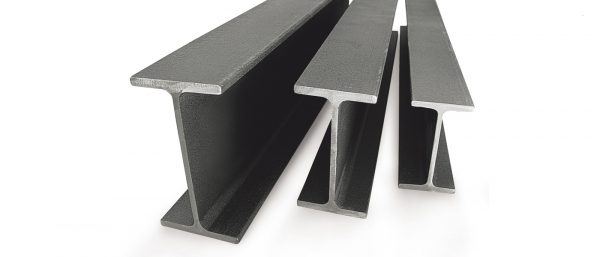
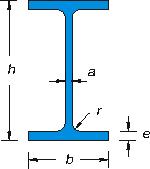
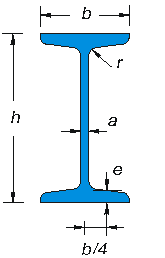

2 Responses
Hi could you please quote for:
Two I-beams 100mm×55mm×3mm×2120m with 3mmflat plates welded on either ends.
Good evening.We are urgently looking for 160 ipe 9meters lengths 6 of them.Please could you give me a ring on Monday morning early.Thank you very much.